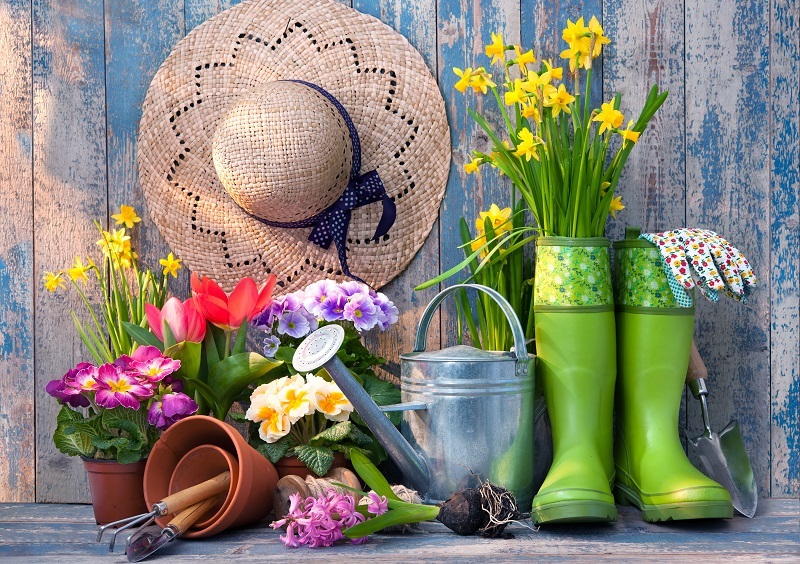Insider Tips for Healthy and Lush Hydrangea Plants
Hydrangeas--with their voluminous blooms and vibrant foliage--are one of the world's most beloved flowering shrubs. Whether you're a novice gardener looking to start your first hydrangea bush or a seasoned horticulturist determined to unlock the secret to truly lush hydrangeas, this comprehensive guide is packed with expert advice and actionable tips.
Understanding Hydrangea Varieties
Before delving into maintenance tips, let's talk about the different hydrangea species. Each type has unique care requirements and responds differently to environmental factors. Here's a quick overview:
- Hydrangea macrophylla (Bigleaf Hydrangea): Known for their large, mophead or lacecap blooms. Flower color can often be altered via soil pH.
- Hydrangea paniculata (Panicle Hydrangea): Cone-shaped blooms, more sun-tolerant and cold-hardy.
- Hydrangea arborescens (Smooth Hydrangea): Includes the famous 'Annabelle' with giant white flower heads.
- Hydrangea quercifolia (Oakleaf Hydrangea): Distinctive oak-shaped foliage and attractive fall color.
- Hydrangea serrata: Similar to Bigleaf, but more petite and cold-hardy.
Knowing your hydrangea type is essential for tailoring care and ensuring healthy, lush hydrangea plants that thrive for years.

Choosing the Ideal Location
One of the foundational secrets to successful hydrangea gardening is site selection. Follow these insider tips for choosing the perfect spot:
Sunlight Requirements
- Bigleaf and Mountain Hydrangeas prefer morning sun and afternoon shade, especially in hotter climates.
- Oakleaf and Panicle Hydrangeas can tolerate more sun (up to full sun in cooler climates), but benefit from some afternoon shade in very hot regions.
Too much direct sun can scorch leaves and cause wilting, while too little light leads to fewer blooms and leggy growth. Observe your garden throughout the day to ensure your hydrangeas are planted in the ideal microclimate.
Soil Quality Matters
- Hydrangeas thrive in well-drained, fertile soil rich in organic matter.
- If your soil is heavy clay or too sandy, amend it with compost, leaf mold, or aged manure.
- Ensure the site does not flood after heavy rains, as standing water can cause root rot.
Watering for Maximum Health
Consistent and deep watering is crucial for lush hydrangae growth and abundant blooms. Here's how to master this essential care step:
How Much & How Often?
- This shrub's shallow root system requires regular moisture, especially in the first 2 years after planting.
- Water deeply 1-2 times per week, ensuring soil is moist at least 6 inches down.
- During hot spells or dry periods, increase watering frequency. Wilting leaves may indicate stress, but also check soil first--overwatering can mimic these symptoms!
Pro Tip: Apply a 2-3 inch layer of organic mulch (like shredded bark or leaf mulch) around the base of your hydrangeas. This conserves moisture and starves weeds without suffocating roots.
Fertilizing for Lush Hydrangeas
To achieve vivid foliage and jaw-dropping blooms, proper fertilization is key. Here's what insider gardeners recommend:
- Use a balanced, slow-release fertilizer (such as 10-10-10) in early spring as new growth emerges.
- If growth is weak or leaves are pale, apply a second light feeding as flower buds develop.
- Avoid high-nitrogen fertilizers, which may encourage leafy growth at the expense of flowers.
- In rich soils, hydrangeas may need less supplemental feeding--over-fertilizing leads to soft, floppy growth.
For organic gardeners: Work compost into the soil yearly, or use a seaweed emulsion for a natural nutrient boost.
Secrets to Pruning Hydrangeas for Health and Blooms
Hydrangea pruning can be intimidating, but strategic cutting ensures fuller shrubs and optimal flowering. The method depends on your hydrangea variety:
When and How to Prune
- Bigleaf & Mountain Hydrangeas: Bloom on old wood--prune right after flowering in late summer. Only remove dead or crossing branches and shape as needed.
- Panicle & Smooth Hydrangeas: Bloom on new wood--prune in late winter or very early spring before new growth appears. Cut stems back to a healthy bud or reduce overall height by 1/3.
- Oakleaf Hydrangeas: Minimal pruning; remove old blooms and deadwood after flowering.
General rule: Always use sharp, clean pruners and avoid heavy pruning in autumn, which can reduce next year's blooms and stress the plant.
How to Control Hydrangea Bloom Color
One of the most exciting aspects of growing hydrangeas is the ability to influence their blossom color. Here's how to tweak your hydrangea shades for stunning results:
Understanding Soil pH Influence
- Blue hydrangea blooms: Occur in acidic soils (pH 5.2-5.5).
- Pink hydrangea blooms: Occur in alkaline soils (pH 6.0-6.2).
- White hydrangeas typically are not influenced by soil pH.
To enhance blue hues, add aluminum sulfate to acidify the soil. For pink, incorporate garden lime to make soil more alkaline. Always test soil pH before making adjustments--rapid changes can harm your plant.
Dealing With Pests and Diseases
While hydrangeas are generally low-maintenance, they are not immune to problems. Healthy, lush hydrangeas start with proactive care:
Common Hydrangea Pests
- Aphids: Small, soft-bodied insects cluster on new growth; treat with a strong water spray or insecticidal soap.
- Spider Mites: Cause speckled leaves and fine webbing--improve air circulation and use horticultural oil.
- Slugs and Snails: These pests chew leaves; hand-pick or use iron phosphate bait.
Typical Hydrangea Diseases
- Powdery Mildew: White, powdery growth on foliage. Ensure good air flow and avoid overhead watering.
- Leaf Spot: Brown or purple spots on leaves; remove affected foliage and water at the base.
- Root Rot: Usually caused by poor drainage--never let hydrangeas sit in soggy soil.
Insider Insight: Most pest and disease issues arise from environmental stress--choose the right location, maintain good hygiene, and your hydrangeas will reward you.
Seasonal Care: Year-Round Hydrangea Maintenance
For truly healthy and lush hydrangea bushes, adapt your care routine with the seasons:
Spring
- Remove mulch from the base to allow new shoots to emerge.
- Feed with balanced fertilizer as growth resumes.
- Monitor for early pests and diseases.
Summer
- Water deeply--especially in heatwaves.
- Deadhead spent blooms to promote new flowers (except for varieties that set next year's buds now).
- Mulch to keep roots cool and moist.
Autumn
- Limited fertilization (if any); stop feeding by mid-September to prevent tender, late-season growth.
- Remove fallen leaves and debris to prevent disease.
- In cold climates, protect roots with extra mulch as winter approaches.
Winter
- For Bigleaf varieties, shield plants from harsh winter winds and snow with burlap or a leaf pile.
- Avoid pruning after August.
- Monitor for winter dieback and plan spring pruning accordingly.
Propagating Hydrangeas: Multiply Your Plants
One of the best-kept secrets among hydrangea enthusiasts is propagation! Here's how you can expand your collection of lush, healthy hydrangeas at home:
Softwood Cuttings (Late Spring/Early Summer)
- Choose a healthy, non-flowering shoot and cut 5-6 inches below a leaf node.
- Remove all but the top leaves and dip the cut end in rooting hormone.
- Plant the cutting in a pot of damp, sterile potting mix and cover with a plastic dome to retain humidity.
- Keep in bright, indirect light and mist occasionally until roots form (in 4-6 weeks).
Layering (Early Fall)
- Bend a low, flexible branch to the ground and wound a small area of bark.
- Pin the wounded section under soil and a stone.
- Roots form by spring, when you can sever and transplant the new plant.
These methods are not only cost-effective but ensure your new hydrangea starts will inherit the same lush qualities as the parent bush.
Frequently Asked Questions about Hydrangea Care
- Why isn't my hydrangea blooming? Reasons may include improper pruning, insufficient sunlight, late frosts damaging buds, or excess nitrogen in fertilizer.
- Should I deadhead hydrangeas? For most types, removing faded blooms encourages fresh flowers and maintains a tidy appearance. Avoid deadheading Bigleaf and Oakleaf in late summer if buds are already formed for next season.
- Can hydrangeas grow in pots? Yes--most hydrangeas, especially dwarf varieties, thrive in containers as long as you provide adequate water, good drainage, and fertilization.

Insider Tricks for Truly Extraordinary Hydrangeas
If you want your hydrangeas to be the envy of the neighborhood, try these advanced tips from expert gardeners:
- Practice patience. Newly planted hydrangeas may take 2-3 years to reach their full blooming potential.
- Shelter from strong winds. Especially important for mophead types, as big flower heads are susceptible to breakage.
- Experiment with companion planting. Plant shade-loving perennials around the base to retain moisture and reduce weeds--think ferns, hostas, and astilbe.
- Rotate mulch material annually. Switching between pine needles, bark, and compost can improve soil health.
For truly lush hydrangeas, consistency is your best friend--regular care, observation, and the right adjustments at each stage unlock dazzling, healthy plants that reward your attention year after year.
Conclusion: Enjoy Healthy, Lush Hydrangea Plants Year After Year
Hydrangeas, with their remarkable blooms and breathtaking diversity, are a magnificent addition to any landscape. By understanding your hydrangea variety, providing the right site, maintaining even moisture, fertilizing appropriately, pruning wisely, and guarding against pests, you can transform a struggling shrub into a thriving, head-turning spectacle.
Put these insider tips for healthy and lush hydrangea plants into action this season, and enjoy a garden that bursts with color and vibrancy all summer long!

